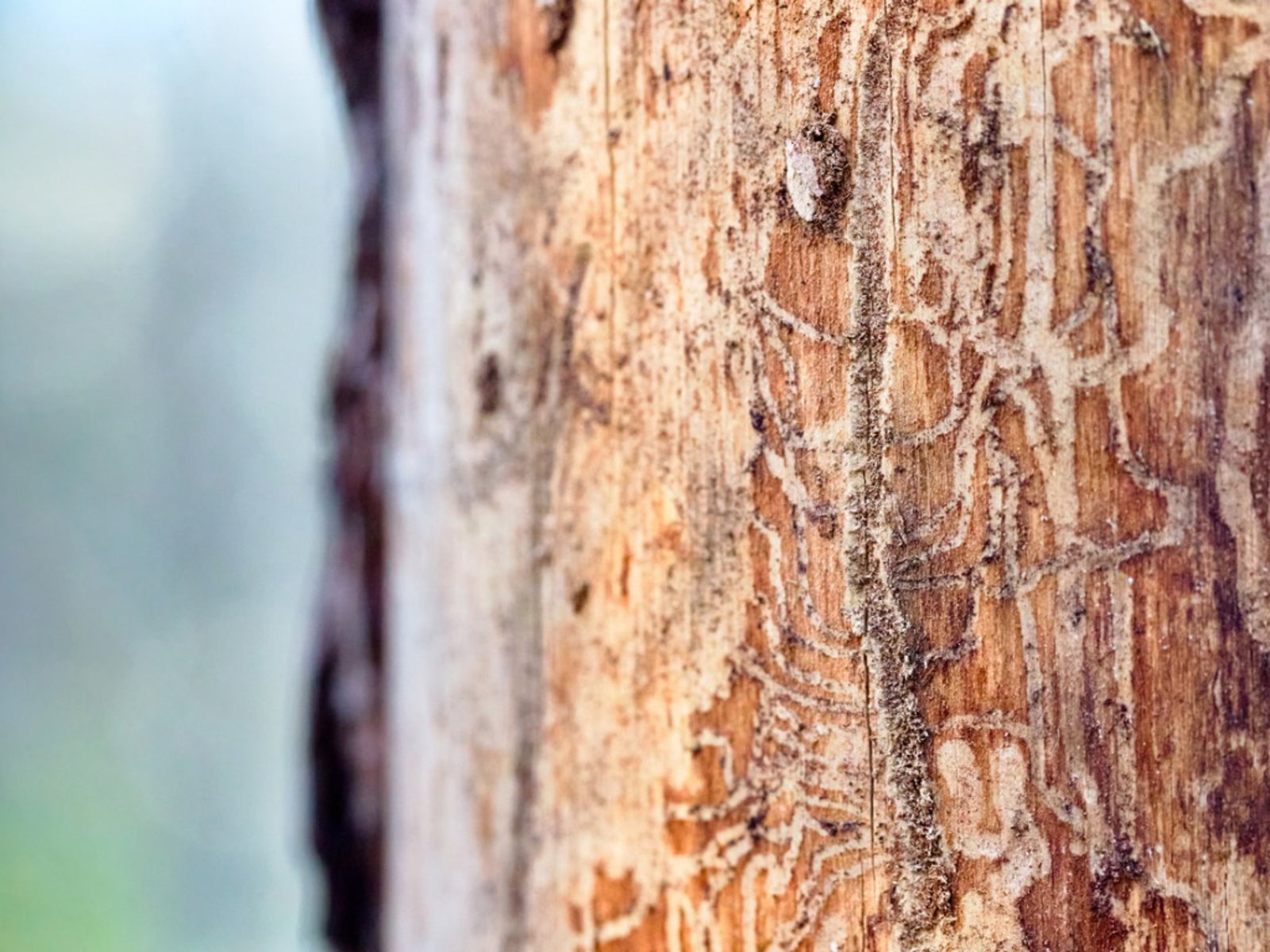Tree Borer Management: Signs Of Tree Borer Insects


Landscape trees burst to life in the spring, sprouting flowers in almost every color and young, tender leaves that soon expand to create puddles of shade on the lawn. Would you know how to identify tree borers if your trees didn't behave predictably one spring? Keep reading to learn more about how to identify tree borers and treatment for tree borers once this becomes an issue.
What are Tree Borers?
Tree borers are a group of insects that lay their eggs on or inside of trees, where the young larvae eat their way through living tissues. These miscreants can be either beetles or clearwing moths, but the end result is the same. Tree borer insects cause affected parts of trees to slowly weaken as their chewing severs vital transport tissues. Over time, they may girdle trees or weaken branches to the point that they break under pressure. The most obvious signs of tree borer insects are the tiny holes they cut into trunks, branches, and stems. These holes may be perfectly round or slightly oblong, sometimes a sawdust-like material, called frass, falls on branches below these holes or forms a long cylinder as tree borer insects excavate tunnels.
Tree Borer Management
Treatment for tree borers can be difficult if adults are already present and laying eggs throughout the tree. Trees with many holes bored through the trunk are often easier to replace than to successfully treat, since the internal damage can be extensive after just a few seasons. Prevention is key if your trees are unaffected, but tree borer insects are active nearby. Trees that are not infested, or have only a few noticeable holes, may be protected from borers by improving care. It may seem too easy, but borers are attracted to trees that are stressed and injured; pruning wounds are a common entry point for the first generation of invading borers. Adding mulch around your tree and providing it with supplemental water and fertilizer will help it fight off borers and heal from previous damage.
Chemical Control of Borers
Trees that are riddled with borer holes are past the point of saving. These trees must be removed for safety's sake; galleries can extend several inches (8 cm.) past the penetration point, weakening limbs and branches that may snap with the first strong gust of wind. You must burn or otherwise destroy the infected tree's tissues as soon as possible to prevent any borers that remain from escaping to nearby trees. Chemical treatments are available for trees with minor infestations, though they generally are aimed at preventing re-infestation. Residual insecticides like carbaryl, chlorpyrifos, lindane, and permethrin are designed to remain on tissues for many weeks, so that any insect that comes in contact with them will die immediately. All woody surfaces must be covered for these materials to work. Imidacloprid and dinotefuran, systemic insecticides, can control borers that remain close to the bark layer of the tree, but should not be applied without identifying the pest inside your tree first. Sticky traps or pheromone-baited traps can be helpful in this department, but don't rely on these traps to provide control for your borer problem. Note: Any recommendations pertaining to the use of chemicals are for informational purposes only. Specific brand names or commercial products or services do not imply endorsement. Chemical control should only be used as a last resort, as organic approaches are safer and more environmentally friendly.
Sign up for the Gardening Know How newsletter today and receive a free copy of our e-book "How to Grow Delicious Tomatoes".

Kristi Waterworth was a regular contributor to Gardening Know How for many years, answering countless queries on plant pests and diseases.